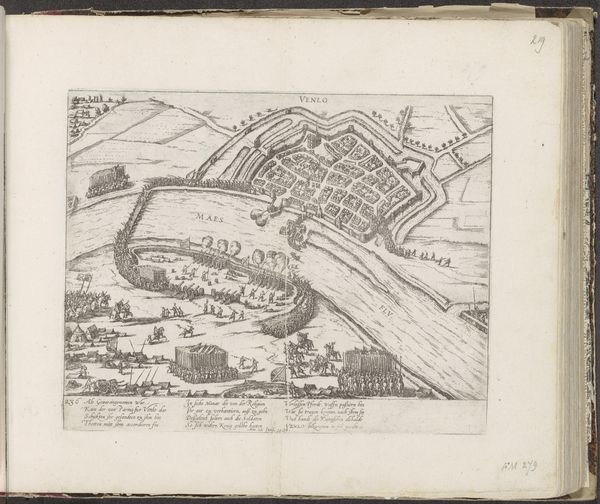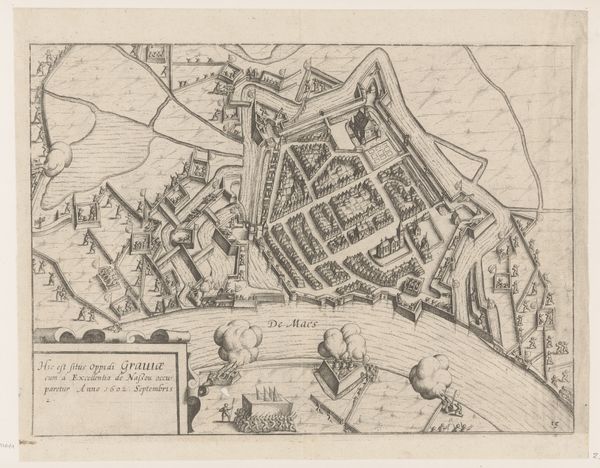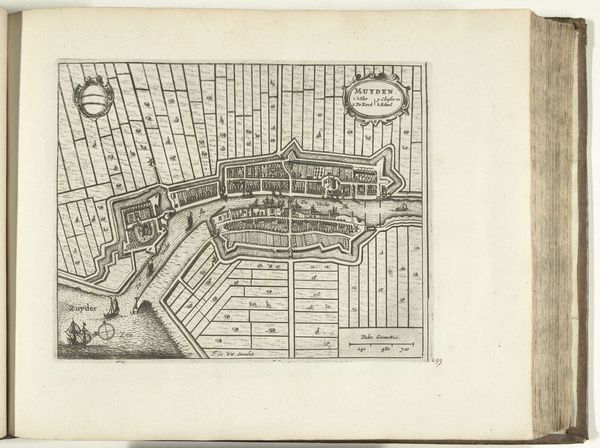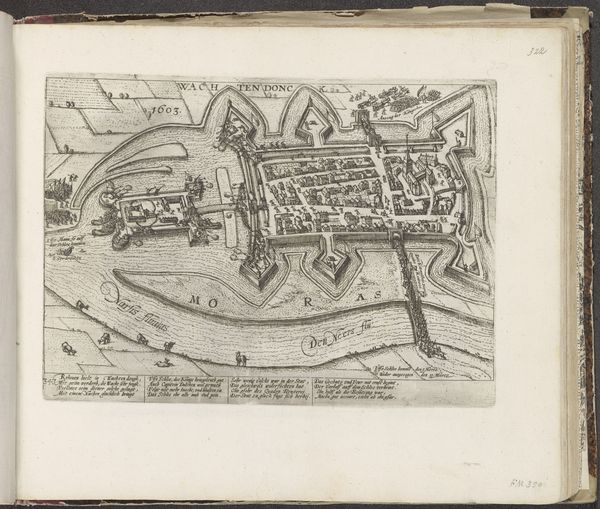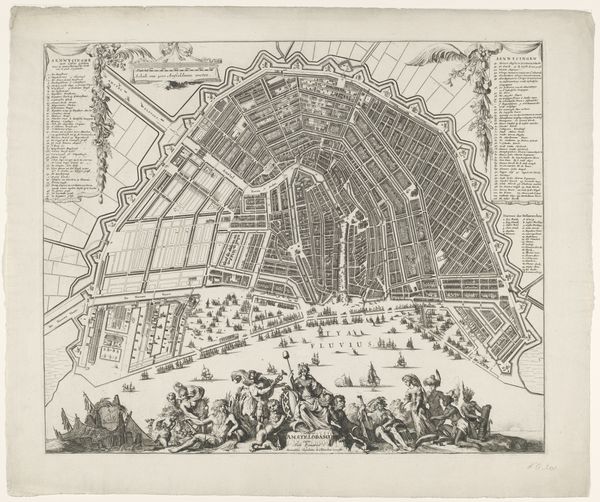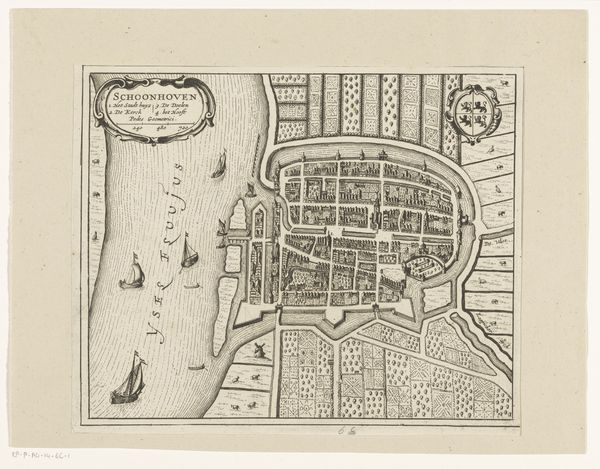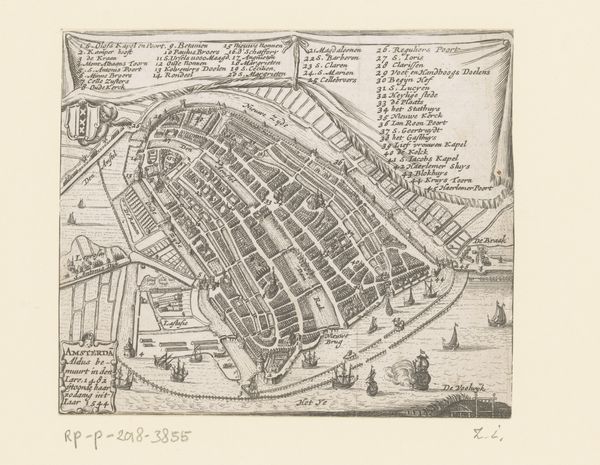
print, engraving
#
dutch-golden-age
# print
#
pencil sketch
#
old engraving style
#
geometric
#
cityscape
#
history-painting
#
engraving
Dimensions: height 284 mm, width 370 mm
Copyright: Rijks Museum: Open Domain
Editor: Here we have an anonymous print from 1748, titled "Plattegrond van Amsterdam, 1482-1601." It’s a detailed map of Amsterdam rendered in engraving. I’m struck by how orderly and contained the city appears within its watery boundaries. What symbols do you find most prominent in this visual representation of Amsterdam's history? Curator: The circular nature of the city's form is fascinating. Think of it not just as practical urban planning, but as a mandala, a cosmic diagram reflecting a desire for order and spiritual harmony. Water isn't just a boundary, it’s a symbol of fluidity, change, and connection to the wider world. See how the buildings have the structure but there are ships going to the horizon to represent wealth and opportunities. The coat of arms is interesting here as it shows both status and patriotism. It speaks to Amsterdam's cultural memory, a sense of place constantly being redefined and re-projected over time. Editor: That's a really interesting take on the water as more than just a boundary. So, are you saying that even something as functional as a city map can be interpreted through the lens of deeper cultural meanings? Curator: Absolutely! Maps are never neutral; they are encoded with the values and aspirations of the societies that create them. Think about what Amsterdam represented in that era – a hub of commerce, innovation, and religious tolerance. These qualities are reflected in how it chose to portray itself. Editor: That gives me a whole new way of looking at historical documents. It's not just about what's literally depicted but also what the artist wanted to communicate about the place. Curator: Precisely! By exploring these symbols, we unlock layers of meaning, gaining insights into how Amsterdam saw itself and wished to be seen. It gives a feeling of continuity as you understand what they valued the most during this time.
Comments
No comments
Be the first to comment and join the conversation on the ultimate creative platform.

